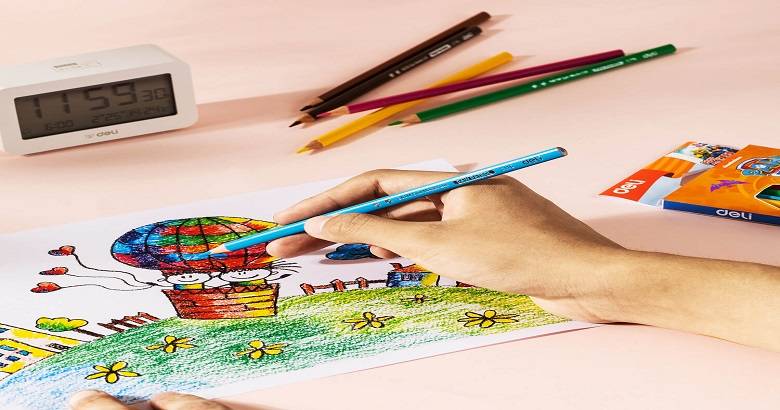Have you created your own coloring book designs and want to share them with the world? Publishing a coloring book can be a fun and rewarding way to get your art in front of potential fans and customers. In this expanded post, we’ll cover the steps to take your coloring book from concept to print in more detail.
Getting Started
The first step is to assemble your portfolio of coloring book page designs. You’ll want to have at least 24-48 fully rendered pages ready to show publishers. The higher page count the better, as it demonstrates you have a full book’s worth of content.
When designing your pages, focus on creating cohesive themes or subjects that potential readers will find engaging. Popular options include animals, plants, landscapes, patterns, inspirational quotes, famous artworks, and more. Think about what people enjoy coloring and design accordingly.
Make sure each page design is of professional print quality. Draw or paint your images at a minimum 300 DPI resolution so they can be reproduced legibly at a small coloring book size without losing detail.
In addition to the artwork itself, consider including titles or captions for each page. These help set the scene or provide context that makes coloring more fun and informative.
Leave blank spaces around your drawings to allow for things like page numbers, publication details, or other elements publishers may want to include. Standard margins are at least 0.375 inches on all sides.
Beyond your portfolio of pages, put together the following book proposal materials:
- Detailed title of the coloring book that sets the right tone and expectations
- Summary describing the concept and content
- Intended age range or target audience demographics
- Estimated page count for the completed book (including front/back matter pages)
- Any applicable copyright or trademark details
- Your background as an artist or relevant credentials/experience
- Notes on production costs or royalties you expect to negotiate
- Description of similar successful coloring books for style comparison
- Marketing ideas to reach potential readers
- Cover design draft concepts for consideration
With your portfolio and proposal polished, you’re ready to approach publishers. But don’t put all your eggs in one basket – it usually takes multiple queries to find the right fit.
Shopping Your Book Around

Research potential publishers by browsing their websites and catalogs. Make targeted queries to those whose styles and audiences align well with your proposed book.
For children’s books, look at major publishers like Cartwheel Books, Golden Books, and Sterling Publishing. Indie presses like Tuttle Publishing and Quarto Publishing focus more on adult themes.
Check submission guidelines. Some publishers only accept agent representation, while others accept direct queries within certain windows. In your initial email, pitch your book succinctly while respecting any word count limits. Attach no more than 5 sample pages as a teaser.
Follow up professionally if you don’t hear back within their estimated response window. Publishers receive a high volume of proposals, so persistence pays off. Personalize each follow-up query by referencing your previous correspondence or noting any new developments.
Networking is another useful tactic. Follow publishers and members of the children’s book industry on social media. Introduce yourself respectfully and inquire about opportunities to submit. Attend industry conferences to make valuable in-person connections.
A publisher may request the full manuscript for formal consideration if your query generates interest. Have it polished and formatted perfectly per their specifications beforehand. They’ll provide timelines for review and when to expect a reply.
Self-Publishing Your Coloring Book
If dealing with multiple publishers proves tedious or no offers feel right, self-publishing gives you full creative control. Several print-on-demand services are dedicated to coloring books.
Carefully format your manuscript according to the printer’s specifications. Leave designated space for things like barcodes and ISBNs. Include front and back matter pages with biographies, dedications, copyright details and more.
Select options like paper quality, cover design templates, softcover vs hardcover, and print runs depending on your budget. Set competitive distribution prices through major online retailers.
Consider crowdfunding pre-orders through Kickstarter to offset startup costs and build buzz before launching. Provide enticing rewards like advance copies or signed prints.
Self-publishing demands robust self-promotion. Engage fans through your artist’s social profiles, blog, email list, and more. Look for industry directories to submit your title and gain visibility. Participate in related local events and coloring book clubs.
Things to Consider
Regardless of your path, keep these key factors in mind as you develop your book:
- Focus on professionally executed artwork. Coloring books require meticulous penmanship, perspective and realism.
- Design for mindfulness with intricate details rather than overt complexity. Balanced difficulty levels make pages satisfying to work through methodically.
- Include a variety of subject matters appealing to diverse interests like animals, plants, architecture, scenic themes and beyond.
- Use high-quality, muted color palettes suitable for coloring techniques and to build an enjoyable atmosphere.
- Provide inspirational quotes, captions or narratives with your pages for an educational dimension.
- Consider interactive elements like perforated pages for removal, hidden images or guided designs to reveal.
- Budget for promotional giveaways and sponsored online advertising campaigns to drive traffic and reviews.
- Track analytics from social profiles and websites to optimize strategies and expand demographics reached.
With persistence, strong concepts executed masterfully could result in multiple published coloring books and a rewarding creative career. The possibilities are colorful! Let me know if you need any other tips for bringing your vision to published pages.
Frequently Asked Question
1. What are the first steps to creating a coloring book?
The first steps include deciding on a theme or subject for your coloring book, sketching out your designs, and then digitizing these sketches. You’ll also need to choose the right software for editing and finalizing your illustrations.
2. What software should I use to design my coloring book?
Popular software options for designing coloring books include Adobe Illustrator, Photoshop, and Procreate. These tools offer a wide range of features for creating and editing vector and raster images.
3. How do I format my coloring book for printing?
Formatting your coloring book involves setting the correct page size, margins, and bleed areas. Most printing services provide templates to help you format your book correctly. You should also ensure your images are high resolution (300 DPI or higher) for clear printing.
4. Where can I publish my coloring book?
You can publish your coloring book through platforms like Amazon’s Kindle Direct Publishing (KDP), IngramSpark, or self-publishing services like Blurb. Each platform has its own set of guidelines and requirements, so it’s important to research and choose the one that best suits your needs.
5. How can I market my coloring book effectively?
Effective marketing strategies include leveraging social media platforms to showcase your artwork, creating a website or blog, engaging with online communities and forums related to coloring and art, and utilizing email marketing. Additionally, you might consider offering free sample pages or hosting online events to attract potential buyers.



